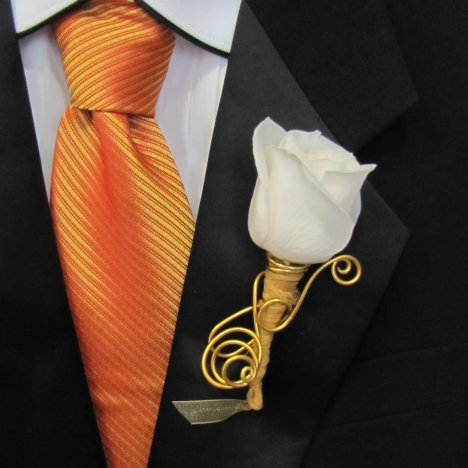rose boutonniere
This rose boutonniere has a tightly wrapped ribbon and there is no danger of becoming unwound due to the twist at the bottom.
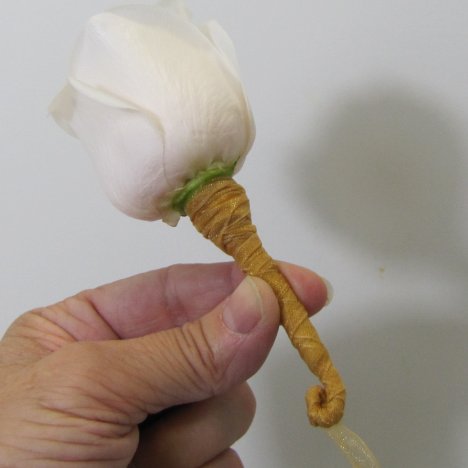
Using a sharp pair of scissors, cut the ribbon off. Using shear that are reserved for fabric and/or ribbon only will the the cuts clean and not frayed.
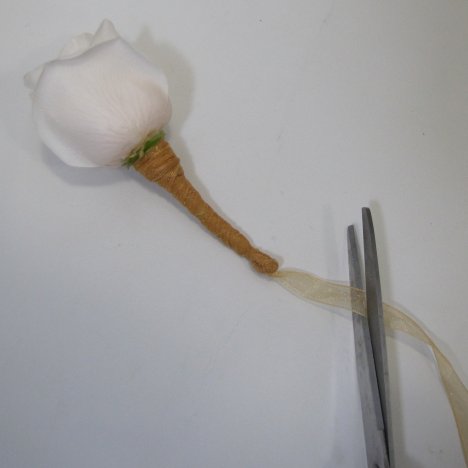
You can cut it off close to the end or leave a decorative tail if you prefer.
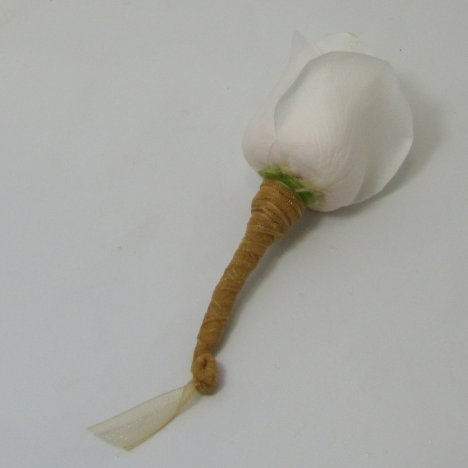
I like to make a wedding boutonniere special, with lots of attention to detailing. That's why using decorative wire is so much fun. This 12 gauge wire is extremely easy to manipulate into all sorts of interesting designs.
I tend to draw out a pattern on paper first before I begin twisting the wire.
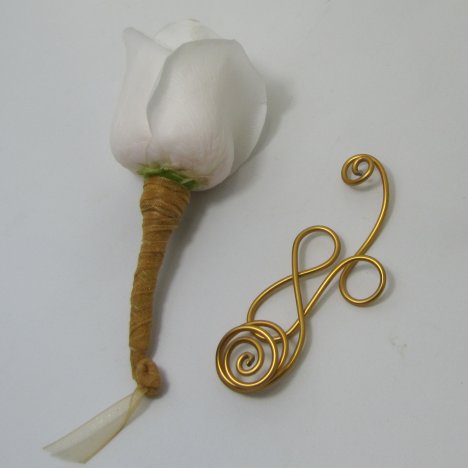
I deliberately built two loops in the design. This is where I'll squeeze the armature around the boutonniere stem.
This wire is by Oasis and is available in 17 cool colors and comes 39 feet to a bolt.
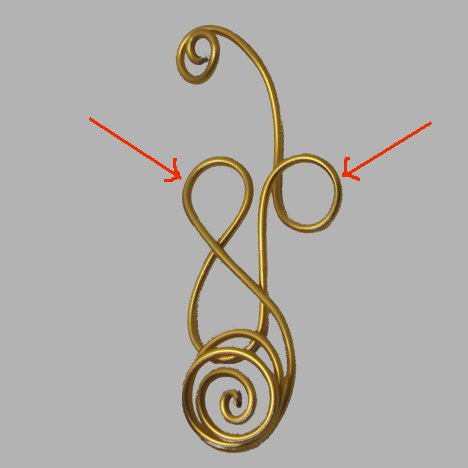
Placed the first loop against the front of the boutonniere, going about halfway down the stem.
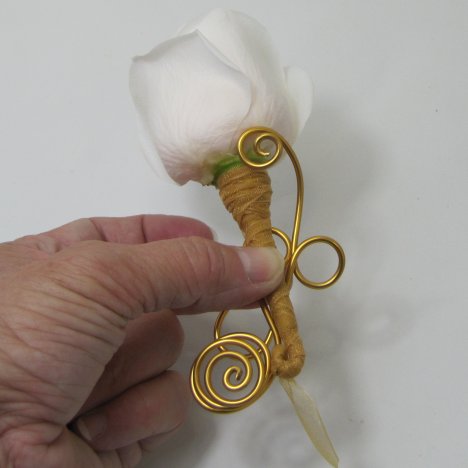
Pull the second loop behind the stem, placed at the same spot on the back.
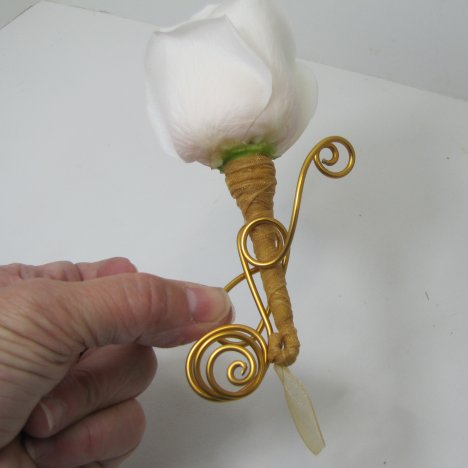
Make a wedding boutonniere unique by creating your own twisted wired designs. Whether you use the same pattern or make up one of your own, I guarantee your boutonnieres will get noticed!
Clamp the wire armature to the boutonniere by squeezing the two middle loops firmly against the stem.
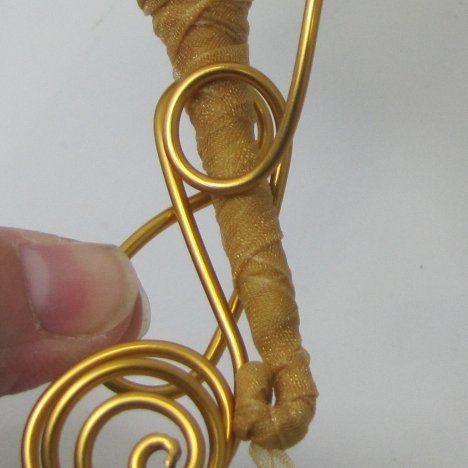
Bend and pull the wire into shape until it is where you want it.
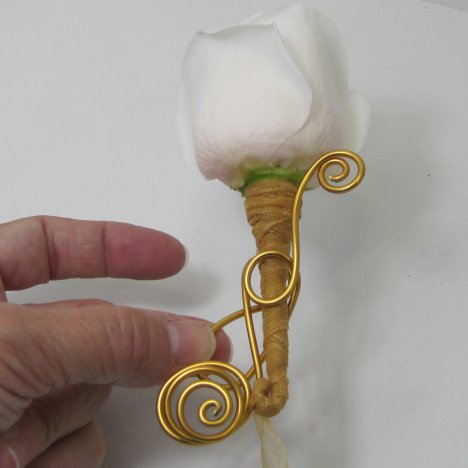
I'm going to cover the green part showing (the top part of the rose bulb/caylex) with a shorter piece of the gold decorative wire.
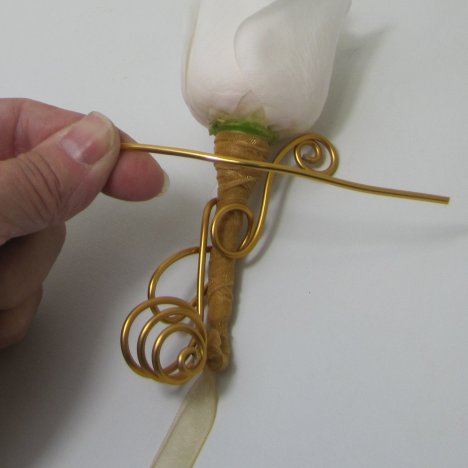
Bend the wire, curving it into shape with your fingers.
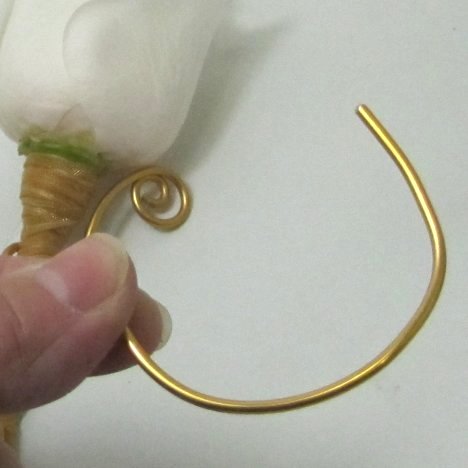
Wrap this shorter wire around the neck of the rose. If you wish to make the decorative piece more secure, you can wrap it about that design, too.
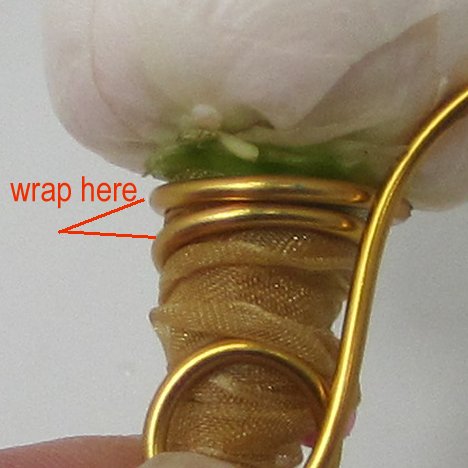
Press the wire armature tightly against the stem, making sure it is secure.
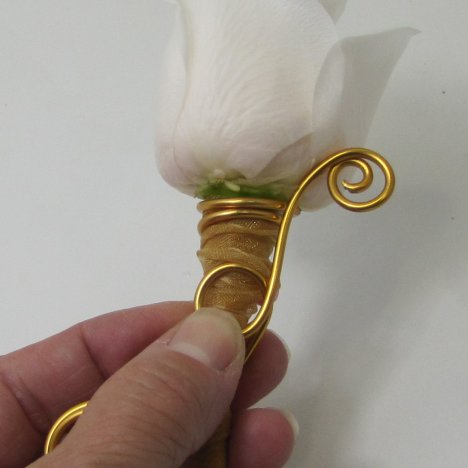
If you need, use a pair of needle nose pliers to squeeze the loops. Take care or the pliers can leave scratch marks in the soft metal.
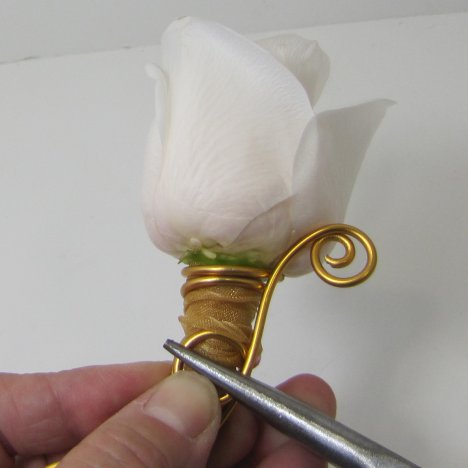
Keep your wedding boutonniere fresh by misting it with a flower sealant like Finishing Touch. I use this product on every design I create. It seals the moisture into the petals and prevents moisture loss that causes petal to become translucent.
This is especially important if you create your flowers a day or two in advance and store in the refrigerator. Home refrigerators take humidity out - florist coolers put humidity in. A flower sealant helps solve this problem.
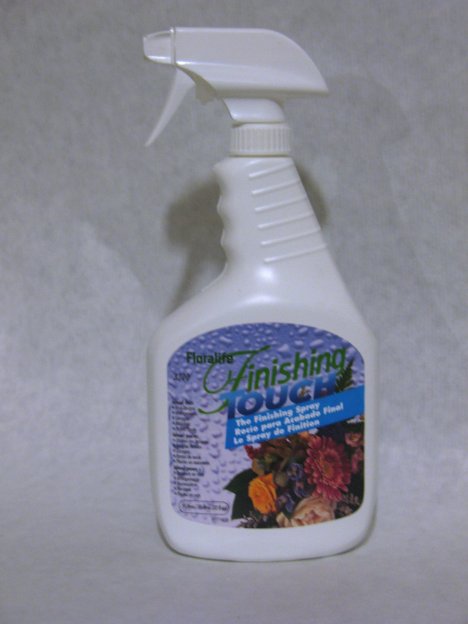
This intricate design can be used as a boutonniere or a corsage. A pretty design as a ribbon wrap turns stunning with the gold wire as an accent.
Pin all boutonnieres on the wearer's left lapel. Push corsage pins up under the lapel and into the flower head, concealing the sharp pin point in the rose.
You can create other boutonnieres with different flowers and accent with wire in a similar manner if roses are not your desired flower.
